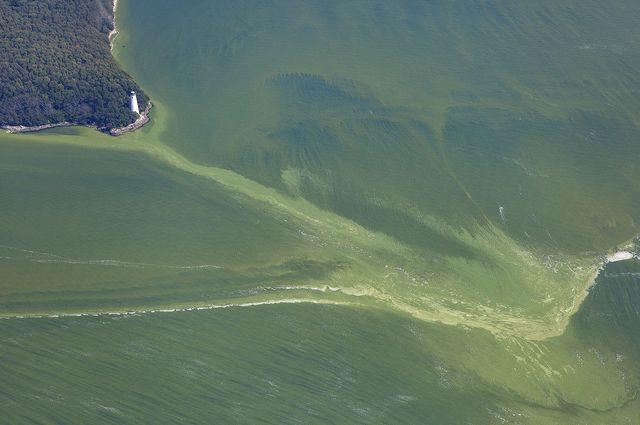Harmful algal blooms pose a unique toxic threat in Lake Erie’s central basin, new research has found.
Not only do blooms routinely occur in this area, they can also produce types of cyanobacterial toxins that aren’t typically detected through routine water-safety monitoring, according to a study published in the Journal of Great Lakes Research.
“The cyanobacteria we found in the central basin are completely different from what we’ve seen in the Toledo area in the western basin,” said lead researcher Justin Chaffin, a senior researcher and research coordinator at The Ohio State University’s Stone Laboratory.
“That’s troubling because water treatment plants aren’t typically set up to look for this bacteria or the toxins they create. It requires more expensive, more sophisticated equipment.”
Harmful blue-green algal blooms and the toxic microcystins that accompany them have been a persistent threat in the lake’s western basin. But until this study, bloom-related toxins hadn’t been formally documented and analyzed in the central basin.
Several years ago, environmental scientists began hearing reports of harmful algal blooms in the central basin, in the waters just west of Cleveland. This was surprising at the time, because the experts thought these environmental threats were concentrated primarily near Toledo, Chaffin said.
The water in the central basin hadn’t been thought of as friendly to cyanobacteria because it isn’t as warm or nutrient-rich as in the western basin, where nitrogen and phosphorous is plentiful because of agricultural runoff brought in by the Maumee River.
The research team sampled the water in four areas from 2013 to 2017 and analyzed satellite images taken before then for evidence of blooms. They found a cyanobacterium called Dolichospermum in the central basin during early-season blooms in July. This cyanobacterium is capable of producing a toxin that can attack the central nervous system in humans, and the researchers found genetic evidence that the bloom has the potential for the neurotoxin.
“What this means is that if you’re a water plant operator in Cleveland, you have to be ready by late June or early July for cyanobacteria because they do have the potential to produce a really potent toxin. It could also be a problem for beachgoers if there’s a north wind and these blooms gather along the Ohio shoreline,” Chaffin said.
Researchers have shared these findings with the Ohio Environmental Protection Agency and with water plant operators, he said.
Later in the season, the researchers found the cyanobacterium Microcystis – the chief troublemaker in the western basin, which feeds off of excess phosphorous – in the central basin. The toxins, called microcystins, that it produces are most harmful to the liver and also a threat to the kidneys and reproductive system. Water plant operators routinely look for microcystins.
Figuring out precisely what is causing these unexpected algal blooms in the central basin will require more work, Chaffin said.
“We still can’t pinpoint what’s really causing these blooms because it’s a complex interaction of several factors,” he said.
But the new study did find evidence that it’s a combination of low levels of iron (which decreases nitrogen availability), muddy water and a strain of Dolichospermum adapted to cooler waters.
The researchers found an association between central basin blooms and lower water clarity – meaning that when the water is muddier, the likelihood of harmful blue-green algae goes up. There’s also evidence that iron plays a role. If there’s not enough iron, beneficial algae’s growth is suppressed, but the harmful algae found in this study likely flourish because they are efficient at capturing iron when the nutrient is in short supply, Chaffin said.
Continual work to reduce sediments, which lead to lower water clarity, is important, he said. And though phosphorous and nitrogen – which have driven blooms in the western basin – aren’t present in high concentrations in the central basin, minimizing them is important to Lake Erie’s overall health, he said.


